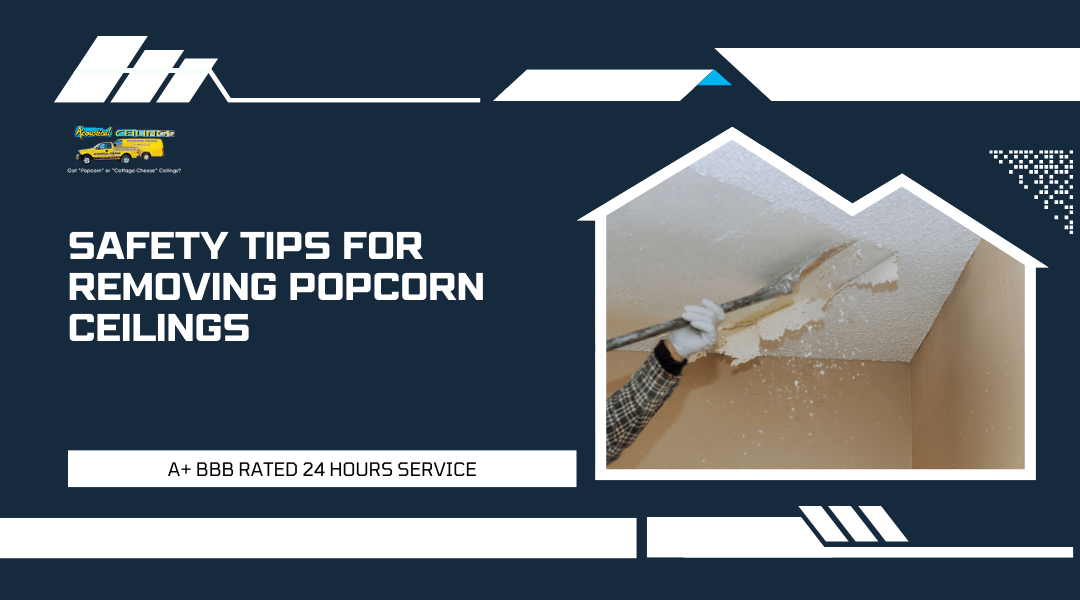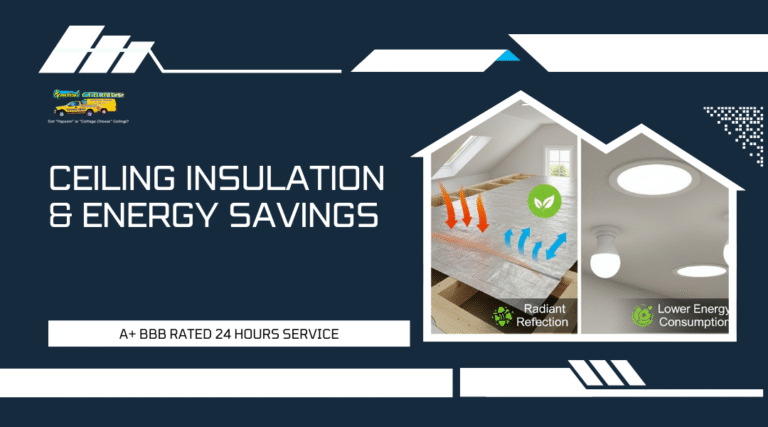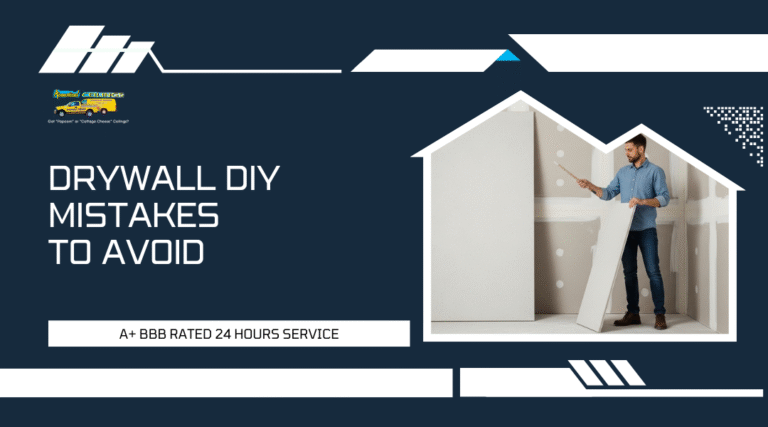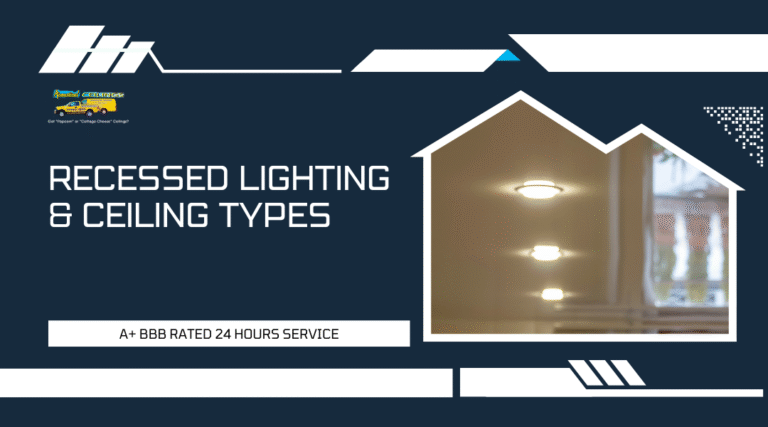Popcorn ceilings can be an eyesore in your home, but they may also pose serious health risks if they were installed before the 1980s. Before you start any removal project, it’s crucial to test for asbestos, as handling this hazardous material improperly can lead to health issues. Knowing how to safely remove popcorn ceilings is essential for protecting you and your family.
In this guide, you’ll learn step-by-step methods for safely removing popcorn ceilings, including the necessary preparations and precautions. It’s not just about getting rid of that outdated texture; it’s about doing it the right way. By following safety guidelines and understanding the risks associated with asbestos, you can tackle this project confidently.
Whether you plan to do it yourself or hire professionals, understanding the process is key. If you’re unsure where to start, this blog post will equip you with the information you need to make informed decisions. Your ceiling is a blank canvas waiting for a modern refresh, and with the right approach, you can turn that vision into reality.
Understanding The Dangers Of Asbestos In Popcorn Ceilings
Asbestos is a hazardous material commonly found in older homes, especially those built between the 1950s and 1980s. Recognizing its risks and knowing how to identify it in popcorn ceilings is crucial for your health and safety.
What Is Asbestos And Why Was It Used?
Asbestos is a group of naturally occurring fibrous minerals known for their durability and heat resistance. This made it a popular choice in construction and building materials, including popcorn ceilings.
Many homeowners appreciated the texture and sound-dampening qualities popcorn ceilings offered. Unfortunately, the use of asbestos in these materials can pose severe health risks. Due to its fibrous nature, once disturbed, asbestos can easily become airborne, putting anyone in the vicinity at risk.
Health Risks Associated With Asbestos Exposure
Exposure to asbestos can lead to serious health issues, even from small amounts. Inhalation of asbestos fibers can cause asbestosis, a chronic lung disease that results in scarring of lung tissue.
Furthermore, long-term exposure significantly increases the risk of more severe conditions like lung cancer and mesothelioma, a rare cancer primarily linked to asbestos exposure. The risks are particularly high in poorly ventilated spaces or during renovations when ceilings are disturbed and fibers are released.
How To Identify Asbestos In Your Ceiling
Identifying asbestos in popcorn ceilings can be challenging since the material often appears harmless. If your home was built before 1980, there’s a chance that asbestos is present.
Here are some steps to assist you:
- Visual Inspection: Look for a bumpy texture typical of popcorn ceilings. It may appear crumbly or discolored.
- Professional Testing: If you suspect asbestos, hiring a certified professional to take samples for laboratory analysis is crucial. Do not attempt to collect samples yourself.
- Check Documentation: Review any renovation history or building documents. Such records may reveal if asbestos was used in your popcorn ceilings.
Understanding these aspects can help you take necessary precautions. Being informed allows you to make safer choices regarding your living environment.
Legal And Safety Considerations Before Removal
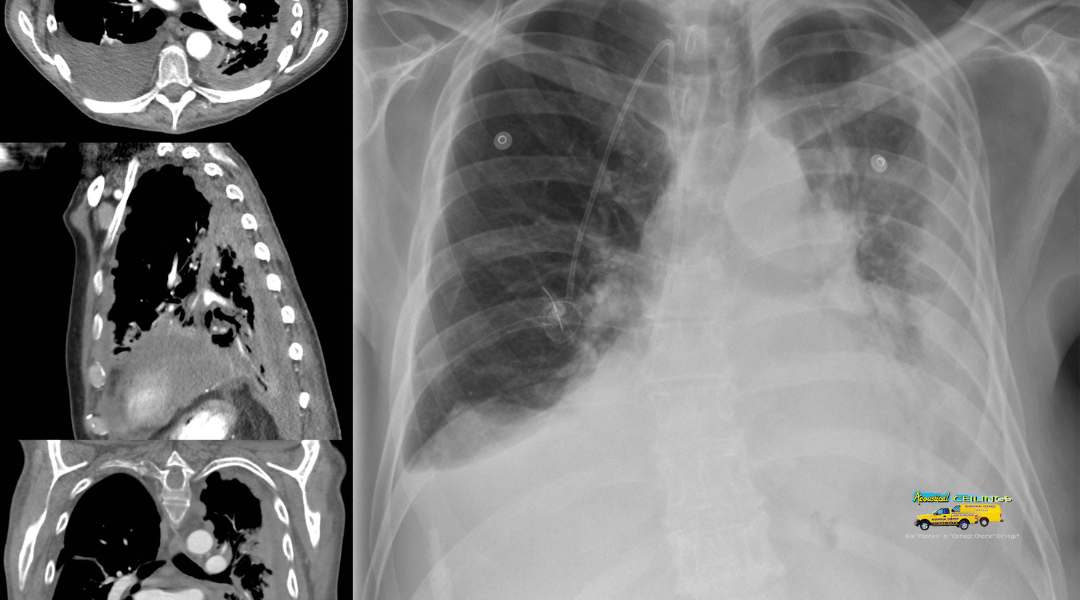
When dealing with popcorn ceilings, understanding the legal and safety requirements is crucial. You must be aware of federal and state regulations regarding asbestos, when it’s necessary to hire professionals, and any permits needed in California to ensure safe removal.
Federal And State Regulations On Asbestos Removal
Asbestos is classified as a hazardous material. The Asbestos National Emission Standards for Hazardous Air Pollutants (NESHAP) outlines strict guidelines for handling and removing asbestos-containing materials. Under these regulations, any asbestos material must be properly removed, stored, and disposed of to minimize exposure.
In California, the California Health and Safety Code complements federal laws. It mandates careful handling of asbestos during construction and renovation projects. Violations can lead to severe penalties. Knowing these laws ensures that you stay compliant and safe.
When Professional Asbestos Abatement Is Required
You should consider hiring a licensed professional for asbestos removal if your popcorn ceiling was installed before 1981. Many ceilings from that time may contain asbestos fibers, which pose serious health risks. A trained expert can conduct tests to identify the presence of asbestos.
If asbestos is detected, DIY removal is not recommended due to health hazards. Professionals are equipped with necessary protective gear and specialized equipment to safely remove asbestos materials without risking exposure to you or others in the vicinity.
Permits And Compliance Requirements In California
In California, obtaining the necessary permits is vital before starting any asbestos removal project. Local health departments often require you to submit notifications for the removal process. Compliance with local regulations ensures that your project meets safety and legal standards.
Additionally, you may have to undergo air monitoring during and after removal. This step confirms that no harmful asbestos fibers remain in the environment. Ignoring these requirements can result in hefty fines and safety violations, impacting your renovation plans. Always verify local laws before proceeding.
Testing For Asbestos: How To Confirm Its Presence
Testing for asbestos is crucial before disturbing popcorn ceilings. You have two main options: DIY testing or hiring a professional. Proper sampling techniques are essential to ensure accurate results. If your test shows positive for asbestos, you need to know the steps to take next.
DIY Asbestos Testing Vs. Hiring A Professional
You can test for asbestos yourself using DIY kits available at hardware stores. These kits include instructions and tools for collecting samples. However, this method has risks. Improper sampling can lead to inaccurate results, and disturbing asbestos can be dangerous.
Hiring a certified professional is safer and more reliable. They have the experience to collect samples without risking exposure. Professionals also send samples to certified labs for testing, ensuring accurate results. If you’re unsure about handling asbestos, opting for a professional gives you peace of mind.
Proper Sampling Techniques For Lab Testing
To get valid test results, follow strict sampling procedures. First, do not disturb the area where you suspect asbestos is present. Wear protective gear, including gloves, masks, and goggles, to minimize exposure.
Use a damp cloth to avoid dust while cutting a small sample. Seal the sample in a zippered plastic bag. Label it clearly with the location and date. Then, send it to a certified lab for analysis. It’s important to choose a lab that is accredited to ensure quality results.
What To Do If Your Test Results Are Positive
If your test results come back positive for asbestos, take immediate action. First, avoid disturbing the area further. If the asbestos is intact and not releasing fibers, you may leave it alone. In this case, encapsulation is often recommended.
If the asbestos is damaged or you plan to remodel, professional removal is necessary. Contact an abatement contractor who specializes in asbestos. They will safely remove or contain the asbestos, protecting you and your family from health risks. Always be cautious and follow local regulations when dealing with asbestos.
Preparing For Safe Asbestos Removal
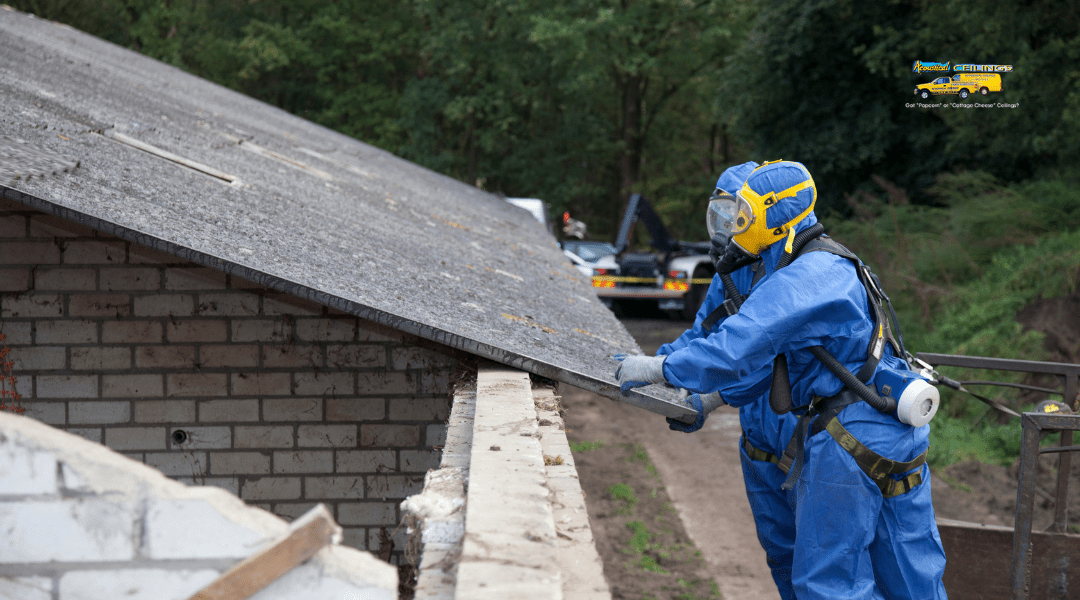
Before starting the removal of popcorn ceilings with asbestos, it is crucial to take proper precautions. This process involves using safety gear, setting up containment areas, and ensuring good ventilation. These steps help protect you and your environment from harmful exposure.
Essential Safety Gear And Protective Equipment
To safely remove asbestos, you need the right safety gear. Start with a high-quality respirator with a P100 filter. This filter captures 99.97% of airborne particles. Wear disposable coveralls to protect your skin and clothes from dust.
Don’t forget gloves—choose thick, disposable ones made of rubber or nitrile. Use goggles to protect your eyes from dust and debris.
Remember to avoid any cloth materials, as they can trap asbestos fibers. Proper gear minimizes the risk of exposure during the DIY project.
Setting Up Containment Areas To Prevent Contamination
Creating containment areas is essential for controlling asbestos fibers. Begin by sealing off the work area with plastic sheeting. Use at least 6-mil polyethylene plastic for durability.
Cover vents and doors to prevent contamination of other rooms. You can use duct tape to secure the edges of the plastic.
Place a designated waste disposal area within the containment zone. This helps manage debris without contaminating the environment. Proper setup ensures you keep your home safe from environmental contamination.
Proper Ventilation And Negative Air Pressure Systems
Good ventilation is critical during asbestos removal. Make sure to use fans to create airflow, directing air towards an exit point. This helps dilute any airborne fibers in the area.
In addition, an effective method is using a negative air pressure system. This involves using a HEPA-filtered air scrubber. It pulls air from the containment area and filters out particles before releasing it outside.
Ensure that any openings are sealed to avoid outside air entering the containment area. This control reduces the risk of fiber spread into other parts of your home, enhancing safety during a DIY project.
Step-By-Step Guide To Removing Popcorn Ceilings With Asbestos
Removing popcorn ceilings that contain asbestos requires careful planning and execution to ensure safety. Follow these steps to minimize danger and effectively manage asbestos-containing materials during the removal process.
Step 1: Sealing Off The Work Area To Minimize Exposure
Before you start, it is important to seal off the area where you will be working. Use plastic sheeting to cover doors, vents, and any openings. This prevents the spread of asbestos fibers to other parts of your home.
Make sure to wear a proper mask and goggles to protect yourself from airborne particles. Tape down the plastic securely to avoid any breaches. You may also want to turn off HVAC systems to prevent the distribution of fibers.
Additionally, inform others in the house about the removal process to keep them away from the work area. This helps create a safer environment during the project.
Step 2: Wetting The Ceiling For Safe Removal
Wetting the popcorn ceiling is crucial. This helps to minimize dust and reduces the risk of fibers becoming airborne.
Use a garden sprayer to gently mist the ceiling surface. Make sure the area is thoroughly damp, but avoid soaking it to prevent water damage.
Start from one corner and work your way across the ceiling. Wait a few minutes for the water to penetrate before proceeding to the next step. This method makes use of water to weigh down any potential asbestos fibers.
Be cautious and avoid disturbing the ceiling until it is adequately wet.
Step 3: Scraping The Popcorn Texture Without Releasing Fibers
Now it’s time to remove the popcorn texture using a ceiling scraper. Choose a wide scraper for better coverage and efficiency.
With the ceiling wet, gently scrape the surface in smooth strokes. Work slowly to avoid creating a lot of dust.
If you encounter joint compound or tough patches, add more water to help loosen them. Always remember to pause and re-wet the area if you see dust begin to rise. After scraping, carefully collect the debris and place it in heavy-duty plastic bags.
Make sure to follow local guidelines for asbestos disposal when you finish this step.
Step 4: Safe Disposal Of Asbestos-Containing Materials
Proper disposal of the materials is vital for safety. Place the collected popcorn ceiling debris in labeled heavy-duty bags. Clearly mark these bags as containing asbestos.
Check local regulations to ensure compliance with hazardous waste disposal. Some areas require specific handling and drop-off locations for asbestos materials.
Do not toss the bags in regular trash. Instead, take them to a disposal site that is certified for handling asbestos. This step protects you and the environment from potential hazards.
Step 5: Cleaning And Decontaminating The Area Thoroughly
After the removal and disposal are complete, you need to clean the workspace. Begin by removing any plastic sheeting you used to seal the area.
Use a damp cloth or sponge to wipe down all surfaces. This helps capture any remaining dust that may contain asbestos fibers.
Dispose of cleaning materials just like the asbestos bags. As a final measure, vacuum using a HEPA filter vacuum to ensure you capture any particles that may be left behind.
Once everything is cleaned and collected, conduct a thorough inspection of the area to confirm that it is free from debris and contamination. This ensures a safe environment post-removal.
Hiring A Certified Asbestos Removal Professional
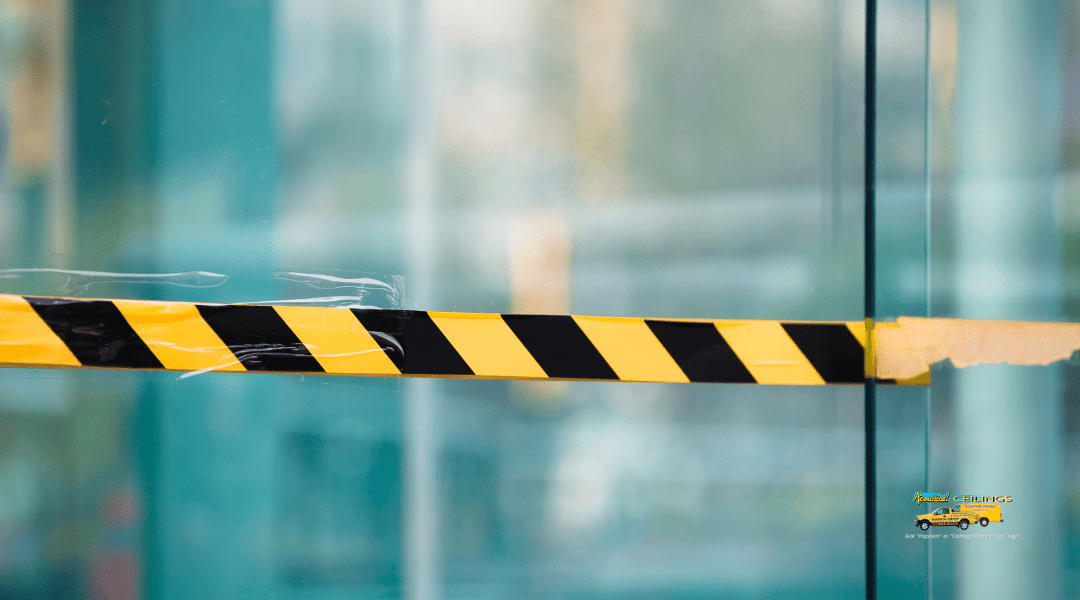
When dealing with asbestos in popcorn ceilings, hiring a certified professional is crucial. They have the training and tools to safely remove hazardous materials while protecting your health and property. Here are some important aspects to consider when seeking professional help.
Benefits Of Professional Asbestos Abatement
Choosing a certified asbestos removal professional offers several advantages. First, these experts understand local regulations and comply with safety standards. This ensures legal protection for you as a homeowner.
They have the right equipment and protective gear to minimize exposure to hazardous fibers. Their experience helps in identifying and managing asbestos correctly.
Professionals also have liability insurance. This coverage protects you from potential damages that may arise during the removal process. Overall, hiring trained experts will provide peace of mind and safeguard your home environment.
How To Choose A Licensed Contractor In Rancho Cucamonga
Selecting a licensed contractor is essential for effective asbestos removal. Start by checking their credentials. Verify that they are licensed, insured, and experienced in asbestos abatement.
Ask for references and read online reviews to gauge their reputation. A reliable contractor should have positive feedback from past customers.
During your conversation, inquire about their abatement process and safety measures. A quality contractor will explain their methods clearly. Compare quotes from multiple contractors to ensure competitive pricing without sacrificing quality.
Cost Estimates For Professional Asbestos Removal
The cost of professional asbestos removal varies. It depends on factors such as the size of the area and the level of contamination. On average, you can expect to pay between $1.50 and $3.00 per square foot for removal.
Additional costs may include testing and disposal fees. Always request a detailed estimate that breaks down all charges.
Keep in mind that investing in professional removal can prevent health risks and future expenses related to improper handling. Prioritize safety and compliance to protect your home and family.
Alternative Solutions If You Don’t Want To Remove Asbestos
If you have popcorn ceilings that contain asbestos, removing them is not the only option. There are effective alternative solutions that can help you manage the risks associated with asbestos safely.
Encapsulation: Sealing The Popcorn Ceiling Safely
Encapsulation involves sealing the asbestos with a special coating or material. This method prevents asbestos fibers from becoming airborne. You can use an encapsulant paint or a specialized sealant designed for asbestos.
To ensure safety, follow these steps:
- Preparation: Clear the area and cover furniture.
- Clean the Surface: Remove dust and debris from the ceiling.
- Apply the Encapsulant: Use a roller or sprayer for even application.
- Inspect: After drying, check for any missed spots and reapply as needed.
This method is usually more cost-effective and less disruptive than full removal.
Covering The Ceiling With Drywall Or Panels
Another option is to cover the asbestos popcorn ceiling with drywall or acoustic panels. This approach effectively hides the asbestos while offering a new look.
Here’s how you can do it:
- Measure and Cut: Measure the ceiling and cut the drywall or panels to fit.
- Secure the Panels: Attach them to the ceiling joists using screws.
- Finish the Edges: Use joint tape and compound to smooth out seams.
- Paint If Desired: After drying, paint the new surface as desired.
This solution adds weight to the structure, so ensure the ceiling can support the additional load.
Painting Over Asbestos-Containing Ceilings: Is It Safe?
You may consider painting over asbestos-containing ceilings as a quick fix. While it is possible, there are important precautions to take.
Using a high-quality encapsulating paint can seal off asbestos fibers. Ensure to:
- Use the Right Paint: Choose a paint specifically designed for asbestos.
- Follow Safety Guidelines: Wear a mask and protective gear during application.
- Ventilate the Area: Keep windows open or use fans to improve airflow.
While painting can help reduce hazards, it is a temporary solution. Regular inspections of the painted surface are necessary to ensure integrity over time.
Conclusion

Removing popcorn ceilings with asbestos requires careful planning. Safety should always be your top priority.
Before starting, you must test for asbestos if your home was built before the 1980s. A positive test means hiring a licensed professional is essential. They have the tools and expertise to handle asbestos safely.
If you do not find asbestos, you can proceed with your removal process. Use protective gear, including masks, goggles, and gloves. This protects you from dust and debris.
When working, remember to:
- Cover floors and furniture to avoid damage.
- Use a spray bottle with water to dampen the ceiling. This helps minimize dust.
- Scrape gently to remove the popcorn texture.
After the removal, clean the area thoroughly. Dispose of materials properly to adhere to local regulations.
Following these steps ensures a safe and effective removal process. It also maintains the health of your home and family.

